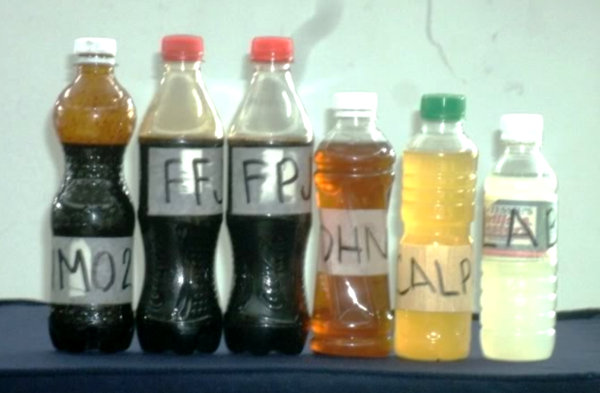MANILA, Philippines An expert from the University of the Philippines in Los Banos (UPLB) Friday said farmers need not spend a fortune in fertilizing their crops since a number of fruits, plants and even fish contain the nutrients needed by the soil.

The use of organic fertilizers is good for farmers since it helps improve the quality of the soil and produces robust plants,Dr. Rodel G. Maghirang said. Some of the organic fertilizers that can be used are fermented plant juice (FPJ), fermented fruit juice (FFJ), fish amino acid (FAA) and calcium carbonate (CaCO3.)
Maghirang made the pitch for green fertilizers in a seminar entitled Development and adoption of green technologies for sustainable agriculture and enhancement of rural entrepreneurship sponsored by the Food and Fertilizer Technology Center (FFTC) and Philippine Council for Agriculture, Forestry and Natural Resources Research and Development (PCARRD.) FPJ can be derived from chopped or minced leaves, grass, coconut and fruits from a week to 10 days. Farmers must add brown sugar at a ratio of a third to one-half of the organic materials.
The plants used for FPJ are kangkong and kamoteng baging even as leaves of the kakawate are also used.
A tablespoon of FPJ can be added to a liter of water and the solution is sprayed on the plant or on the soil. This solution contains a hormone that Maghirang said boosts the vitality of beneficial microorganisms that help make plants grow.
FFJ may be prepared by using peelings from fruits, overripe bananas, papaya, melons or pineapple, with molasses or brown sugar added at a rate of one half the volume of the organic materials. Others prefer to make the ratio 1:1.
A tablespoon of FFJ may be added to five liters of water for plants cultivated on fertile soil. For plants in soils that need to be fertilized, two tablespoons for every liter of water are needed.
As in FPJ, the solution can be sprayed on the leaves at the onset of flowering or fruit-bearing.
FAA is a good source of nitrogen for plants and can be used to supplement compost or animal manure, like chicken droppings. This is appropriate for farms near the sea where farmers can get fish gills and fish maws.
In producing FAA, brown sugar or molasses are added to the mixture at the same ratio. Lactic acid bacteria may be stirred into the solution to reduce the stench of the solution, which should be placed in a clay jar and covered with paper or carton. Fermentation will start on the second week.
Between one and two tablespoons of the FAA can be added to a liter of water and sprayed on the soil or applied directly to the leaves week. Farmers must abide by the exact amount of FAA to be added to the water.
Another organic substance that can raise output is calcium carbonate (CaCO3) from egg shells, which contain 95 percent of CaCO3. Apart from calcium carbonate, the shells have phosphorus, magnesium, sodium, potassium, zinc, manganese, iron, copper and other elements.
To dissolve calcium carbonate, the shells are fried until they turn brown or black after which they are pounded to become powdery. Vinegar from coconut, sugar cane, pineapple or bananas are added at a ratio between five to 10 parts of the egg shells.
Source: http://www.mb.com.ph/articles/343387/use-green-fertilizers-pushed


Sana ang video ay philippines setting din